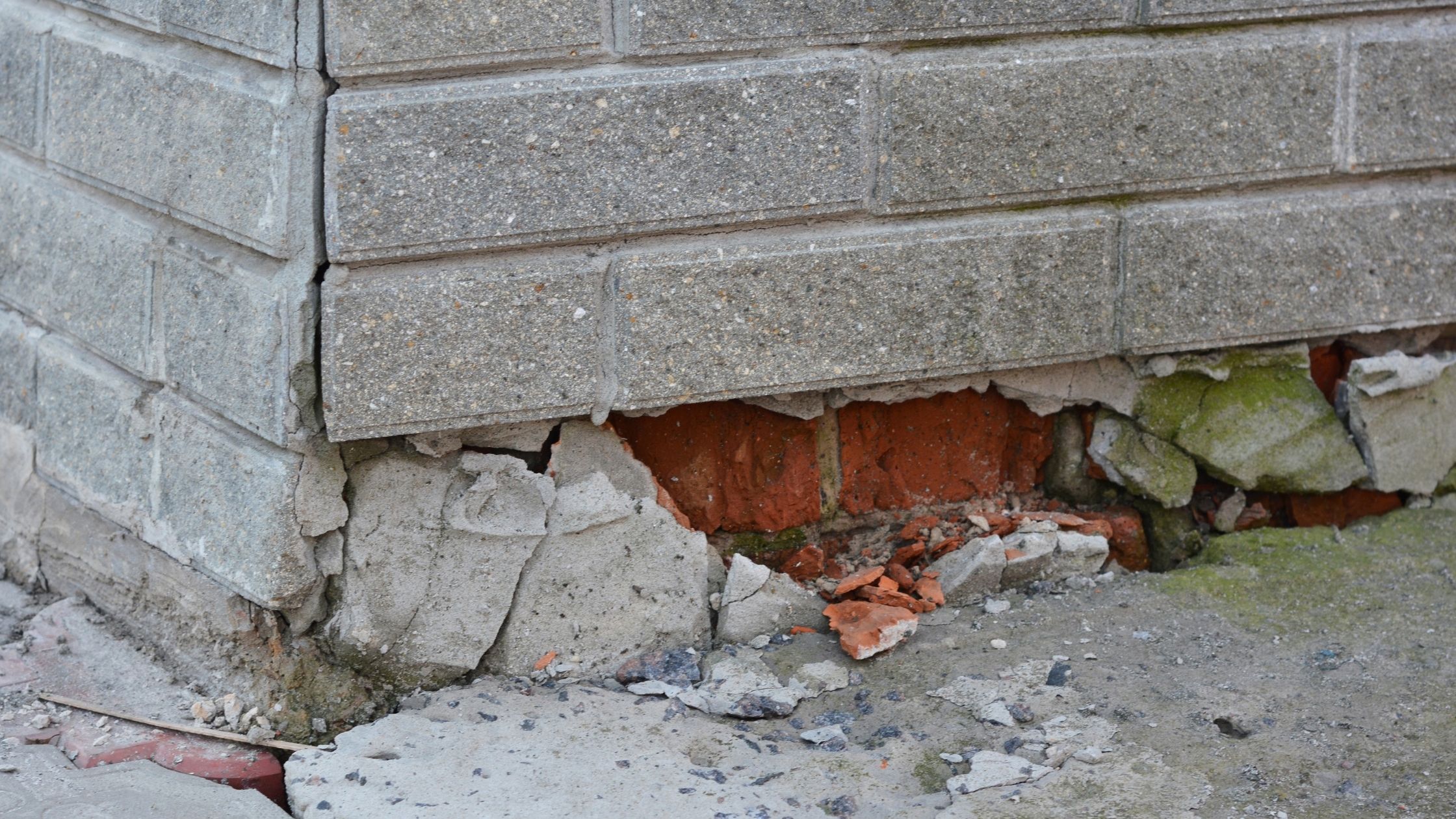Why would you want to bother hiring a structural engineer to look at a property before you buy it? Isn’t that what the home inspector’s report is for?
We looked at the foundation of a $600,000 second home here in Blowing Rock and found that approximately one quarter of the foundation was cracking and sagging, leaving a 1-inch gap between the kitchen floor and the wall. You could feel the wind blowing into the kitchen from outside. There was no leader (black drain tube) on the downspout, so it was dumping water right onto the uphill corner of the foundation. When the contractors came to fix it following our report, they found that the kitchen, which had once been a carport, had a front wall that ended in a 12’-wide header, and blocks were just set under it without mortar. The corner was carrying the whole weight of half of the garage door width, and the block there had disintegrated with the constant flow of rainwater from the downspout. The diagnosis and repair of the problem made a $45,000 difference in the price of the home, but our fee was right around $850.
A home inspector may carry a level, and they often notice structural issues, but they do not generally comment on them, because structural issues are not their forte. They have to know a little bit about everything, but they are not going to put their licensure on the line to make structural assessments.
At another residence, the owner had not been able to spend any time in the home he inherited from his father, as he had been nursing him through the COVID era, having to reach in through a window, sometimes with a glove, to touch his dad’s hands. When he finally came back to the million-dollar view in Blowing Rock, the side porch was about to slide down the mountain, and there were a series of concrete and wood buttresses in the basement, as though it were some sort of medieval fortress. The home was built with a 15’ wall on the uphill side of the basement, and the concrete block wall was neither filled with concrete nor reinforced. Imagine a frozen 15’ wall of molasses outside the front of your home, slowly thawing as the spring warms the air and soil. That is about what your foundation has to resist, if you have a 15’ wall of soil uphill of your foundation. This particular home’s foundation wall was behaving as though there were a thick liquid behind it — the wall was bulging in by several inches, both vertically and horizontally, between the massive concrete buttresses erected to keep it from bursting inwards.
There actually was a disaster in Boston in 1919, when a 2.5-million-gallon tank of molasses burst, sending a wave through the streets which killed 21 people, as well as destroying buildings and killing horses. The tank was 50 feet high, and it had been filled to the top the day before bursting. Soil will not generally move as fast as the molasses did that day — about 35 miles per hour —but what soil will do is move downhill relentlessly, never giving back an inch it gains. The downward pressure under 15 feet of earth would be about a ton on every square foot, and even dry soil will turn part of that vertical pressure into horizontal pressure. But as moisture saturates soil, it acts more and more like a liquid, so the horizontal pressure (which would be exerted against a foundation or basement wall) becomes closer to the vertical pressure. If the soil pressure was truly like that of a liquid — equal in the horizontal and vertical dimensions — then the pressure across a 30-foot wide basement wall 15-feet deep would be about 450,000 pounds, as much as about 6 fully loaded tractor trailers, or two freight train cars!
Thinking about the actual forces bearing down on your home, as well as the potential consequences of them. That’s why you should consider the relatively small investment of hiring a structural engineer when your home is experiencing cracking, settlements, unexplained problems, or when you are trying to sell or buy a home with unknown potential problems.
Areté provides structural engineering services to the building community.
Do you have questions about structural engineering? Areté Engineering does structural engineering design of homes and commercial buildings, plans for wall removals, decks, and other renovations, and structural assessments on existing homes and buildings. Areté Structures designs and builds fiberglass-reinforced polymer pedestrian bridges. Areté Infrastructure division designs and inspects major and minor bridges throughout the Southeast. Come look at: Home – Areté Engineers


